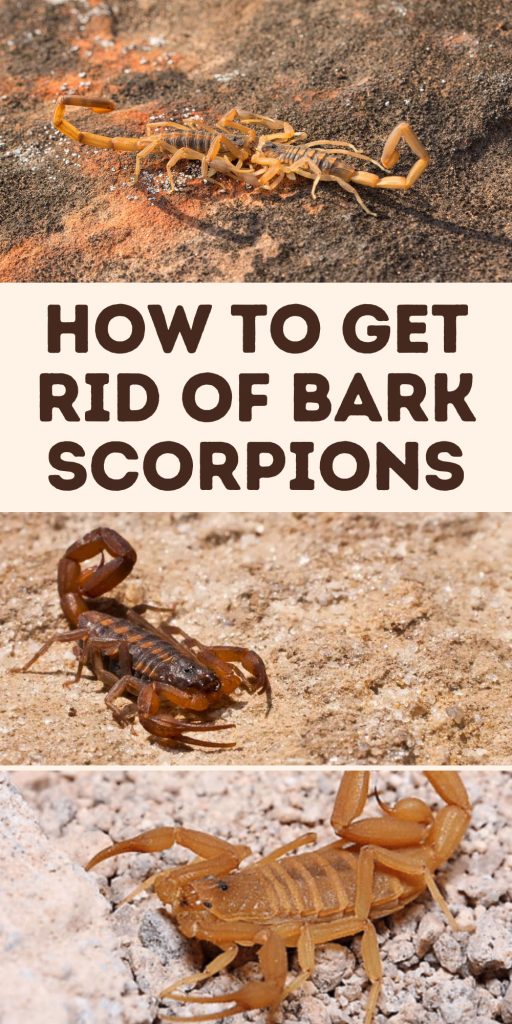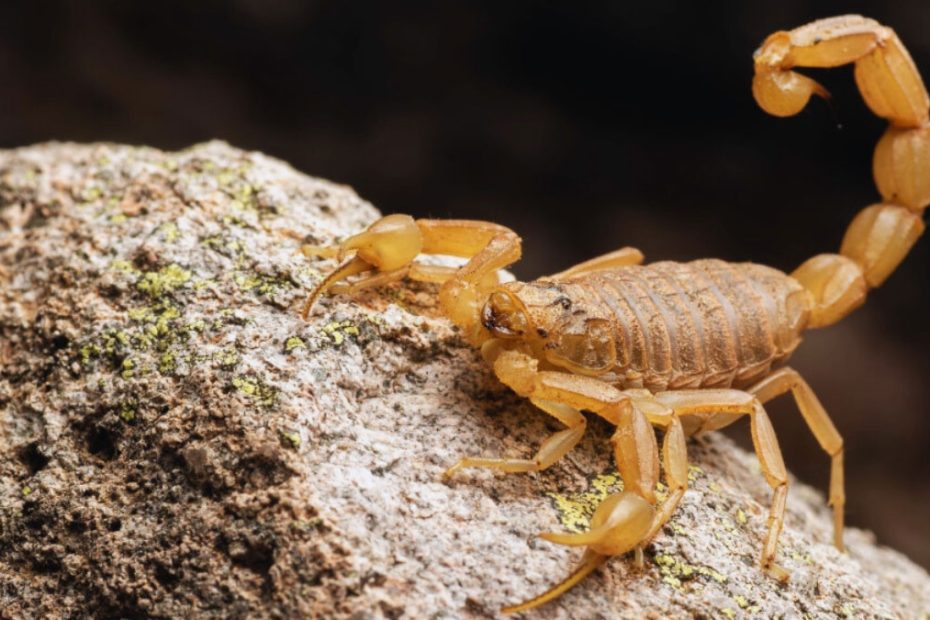Discovering bark scorpions in your home can be alarming, especially since these critters are notorious for their venomous sting. Native to the southwestern United States, bark scorpions often seek shelter in cool, dark places, making your home an ideal hideout. But don’t worry, you can take effective measures to reclaim your space.
Understanding their behavior and habitat is the first step in eliminating them. By making your home less inviting and employing targeted removal techniques, you can significantly reduce the chances of a scorpion encounter. Let’s jump into practical strategies to keep these unwelcome guests at bay.
Key Takeaways
- Understanding Bark Scorpions: Recognizing the characteristics and behaviors of bark scorpions, such as their nocturnal nature and climbing ability, is crucial for effective management.
- Preventative Measures: Implementing strategies like sealing entry points, reducing clutter, and managing outdoor lights can significantly lower the risk of scorpions entering your home.
- Natural Remedies: Using essential oils and encouraging natural predators like chickens and cats can provide eco-friendly solutions to manage bark scorpion populations.
- Chemical Solutions: Utilizing insecticides and pesticides, and seeking professional extermination services for severe infestations, ensures immediate and long-lasting control.
- Safety Precautions: In case of a sting, follow proper first aid steps, and maintain a clean and secure environment to protect children and pets from potential scorpion harm.

Understanding Bark Scorpions
Bark scorpions, scientifically known as Centruroides sculpturatus, are a common pest in many arid regions. Understanding their characteristics and behavior is key to managing their presence in your home.
Identifying Bark Scorpions
It’s essential to accurately identify bark scorpions to effectively address infestations.
- Size: Typically 2.5 to 3 inches long.
- Color: Light tan to yellow-brown.
- Distinctive Features: Narrow pincers and a segmented tail with a venomous stinger.
Habitats and Behavior of Bark Scorpions
Bark scorpions prefer specific environments and exhibit distinct behaviors.
- Preferred Environments:
- Cool, dark areas such as closets or garages.
- Under rocks, tree bark, or within wood piles.
- Indoors, they often enter through small cracks and gaps.
- Behavioral Traits:
- Nocturnal: Active at night and seeking shelter during the day.
- Climbing Capability: Able to scale vertical surfaces, including walls and furniture.
- Aggregation: Can be found in groups, especially during cooler months.
Preventative Measures
Scorpions are a serious concern. You’ll need to employ several preventative measures to keep them out of your home.
Sealing Entry Points
To prevent scorpions from entering your home, start by sealing entry points.
Key areas to focus on:
- Doors: Install weather stripping at the base.
- Windows: Ensure screens are intact.
- Walls: Use caulk for cracks or gaps.
Regularly inspect these areas to maintain a scorpion-proof barrier.
Removing Clutter
Bark scorpions love clutter. Keeping your spaces tidy will make your home less inviting to them.
Steps to reducing clutter:
- Indoors: Clear out under beds, closets, and storage rooms.
- Outdoors: Remove wood piles and debris from near walls.
- Garages: Organize tools and equipment on shelves.
Effective clutter management ensures fewer hiding spots for scorpions.
Managing Outdoor Lights
Outdoor lights attract insects, which in turn attract scorpions.
- Use yellow bulbs: They attract fewer insects.
- Move lighting fixtures: Place them away from doors and windows.
- Install motion sensors: To reduce the duration lights stay on.
Optimizing your outdoor lighting can significantly decrease scorpion activity around your home.
Natural Remedies
Natural remedies can provide effective solutions for managing bark scorpions without the use of harsh chemicals. These methods not only help eliminate scorpions but also minimize the risk to your family and pets.
Essential Oils
Essential oils are a popular and natural way to repel bark scorpions. Certain oils contain compounds that scorpions find unpleasant, making your home less inviting.
Common Essential Oils:
- Lavender Oil: Known for its strong scent, lavender oil deters scorpions.
- Cedarwood Oil: Contains potent repellent properties.
- Cypress Oil: Effective in masking the scent trails scorpions use to navigate.
- Peppermint Oil: Its strong aroma repels a variety of pests, including scorpions.
Application Steps:
- Mixing: Combine 10-15 drops of essential oil with 1 cup of water in a spray bottle.
- Shaking: Shake the bottle well to mix the solution thoroughly.
- Spraying: Apply the solution around entry points like doors, windows, and baseboards.
- Reapplying: Reapply the spray every few days or after cleaning to maintain its effectiveness.
Predatory Animals
Introducing natural predators can help control bark scorpion populations. Certain animals prey on scorpions, reducing their numbers without human intervention.
Common Predatory Animals:
- Chickens: They naturally hunt and eat scorpions, making good deterrents.
- Cats: Known for their hunting skills, cats often target scorpions.
- Owls: These nocturnal birds prey on scorpions, helping manage their population.
- Lizards: Some species, like geckos, actively hunt scorpions.
- Adding Chickens: Consider chicken coops if you have space and live in a suitable area for poultry.
- Encouraging Cats: If you have cats, ensure they have access to areas where scorpions are present.
- Attracting Owls: Install nesting boxes to attract owls to your property.
- Releasing Lizards: Certain lizard species can be introduced to outdoor environments to control scorpion populations.
Using these natural remedies, you can manage bark scorpions effectively while maintaining a safe and eco-friendly approach.
Chemical Solutions
Chemical solutions offer strategic measures to eliminate bark scorpions. These methods balance immediate effectiveness with safety considerations.
Insecticides and Pesticides
Insecticides and pesticides can be potent tools against bark scorpions.
Insecticides:
- Pyrethroid-based Sprays: Effective for direct application, use around entry points and hiding spots.
- Dust Formulations: Apply these in hard-to-reach places like wall voids and attic spaces.
Pesticides:
- Residual Pesticides: Remain active over time, creating long-lasting barriers in areas where scorpions are frequently seen.
- Microencapsulated Pesticides: Provide slow-release protection, useful for prolonged control.
When using these products, ensure to:
- Read and follow the label instructions.
- Wear protective clothing.
- Keep children and pets away from treated areas until dry.
Professional Extermination Services
For severe infestations, professional extermination services might be necessary.
- Inspection: Conduct thorough inspections to identify all entry points and scorpion habitats.
- Targeted Treatment: Apply specific treatments tailored to your home’s unique needs, maximizing effectiveness.
- Ongoing Maintenance: Offer routine treatments and monitoring to ensure long-term control.
Hiring professionals ensures that:
- Correct products and methods are used.
- Safety protocols are strictly followed.
- Infestations are managed comprehensively.
By integrating chemical solutions and professional services, you can effectively manage and eliminate bark scorpion infestations.
Safety Precautions
Ensuring your safety and that of your family is paramount when dealing with bark scorpions. Follow these guidelines to minimize risks and protect everyone in your home.
What to Do if Stung
If stung by a bark scorpion, prompt action is essential:
- Clean the Wound: Wash the sting site with soap and water.
- Use Ice: Apply a cool compress or ice pack to reduce swelling and pain.
- Pain Relief: Take acetaminophen or ibuprofen to alleviate pain.
- Monitor Symptoms: Watch for severe reactions such as difficulty breathing, muscle twitching, or excessive drooling, especially in children or adults over 65. Seek immediate medical attention if these occur.
Protecting Pets and Children
Scorpions pose a significant risk to pets and children:
Keep Areas Clean: Regularly clean and declutter spaces where scorpions might hide, such as closets, garages, and under furniture.
Seal Entry Points: Ensure windows and door gaps are sealed with weather stripping; repair any cracks in walls and foundations using caulk.
Use Safety Gear: Equip children with closed-toe shoes and gloves when playing outdoors or near potential scorpion habitats. Educate them about the importance of avoiding dark, hidden spaces.
Pet Safety: Inspect pet bedding and sleeping areas; avoid placing pet bowls near entry points. Consider raising food and water bowls off the ground to reduce the risk.
Outdoor Lighting: Install motion-sensor outdoor lights and use yellow bulbs to limit insect activity that attracts scorpions, so making your property less inviting to them.
Following these safety measures will help safeguard your loved ones and pets from the dangers posed by bark scorpions.
Conclusion
Dealing with bark scorpions requires a multi-faceted approach. By understanding their behavior and habitat, you can take effective preventative measures to keep them out of your home. Natural remedies and chemical solutions offer additional layers of protection, ensuring a comprehensive strategy.
Safety is paramount when managing scorpions. Always follow guidelines for handling stings and use protective gear when necessary. Combining these methods will help you maintain a scorpion-free environment, safeguarding your home and loved ones from these venomous pests.
Frequently Asked Questions
What are bark scorpions?
Bark scorpions (Centruroides sculpturatus) are venomous scorpions commonly found in arid regions. They measure 2.5 to 3 inches long, are light tan to yellow-brown, and have narrow pincers and a segmented tail with a venomous stinger.
Where are bark scorpions typically found in homes?
Bark scorpions prefer cool, dark hiding spots like closets, garages, and under rocks or wood piles. They are nocturnal and can climb vertical surfaces, often found in groups during cooler months.
How can I prevent bark scorpions from entering my home?
Seal entry points by installing weather stripping on doors, ensuring window screens are intact, and using caulk for cracks in walls. Regularly inspect these areas to maintain a scorpion-proof barrier.
What natural remedies can help manage bark scorpions?
Essential oils like lavender, cedarwood, cypress, and peppermint can repel scorpions. Mix the oils with water and spray around entry points. Introducing natural predators such as chickens, cats, owls, and certain lizards can also help control scorpion populations.
Are chemical solutions effective against bark scorpions?
Yes, various insecticides and pesticides can effectively eliminate bark scorpions. Options include pyrethroid-based sprays, dust formulations, and residual pesticides. Follow safety precautions and consider professional extermination services for severe infestations.
What should I do if a bark scorpion stings me?
Clean the wound, apply ice, take pain relief medication, and monitor for severe reactions. Seek medical attention if symptoms worsen or if stung by a bark scorpion, as their venom can cause serious health issues.
How can I protect my pets and children from bark scorpions?
Regular cleaning, sealing entry points, using safety gear, and managing outdoor lighting can help protect against scorpions. Removing clutter and keeping living spaces tidy are also crucial preventative measures.
